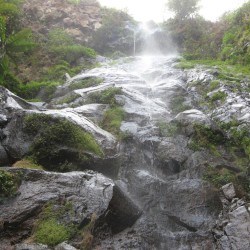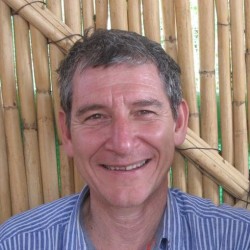
Humbo, fifteen years later
June 10, 2015
Being in Humbo again was for me an emotional home coming. My first ever World Vision field visit in 1999 was to the Humbo woreda, in the Great Rift Valley of Ethiopia. The area had been the recipient of food relief to one degree or another since 1984, and this continued until very recently. The barren hills shed the heavy seasonal rains which resulted in flooding, causing deaths, loss of livestock and property and destruction of crops. It was the exception to send children to school because they were required to assist with fetching water, fodder and fuel wood and with farming operations. Livestock were in poor condition due to shortages of fodder. There was no resource foundation upon which income generating activities could be built. Conflict over scarce resources was common.
What I have witnessed over the last few days is amazing and a number of us have been deeply moved. Due to the FMNR program in combination with agricultural interventions Humbo reforestation Cooperatives began selling grain to the World Food Program in 2012! Forest restoration, which began in 2006, has resulted in a surplus of fodder, creating a substantial hay market. All households have enough fuel wood to meet domestic needs, and it is only a matter of time before significant sustainable wood markets emerge. Flooding has stopped. The project is renown in the region for its market supply of traditional medicines and a dozen or so wild fruits have re-appeared after a four decade absence. Income generating opportunities are emerging, including tourism, marketing agricultural produce, sale of forest tree seeds, livestock fattening, honey, and more.



1. Regrowth from tree stump using FMNR
2. Hay markets represent a new income opportunity
3. Water spring flowing vigorously
Conflict is greatly reduced. In the case of Soddo, 13 springs have begun flowing again, 6 of them running all year. Soddo is the water tower for more than 3 million people in the district. There is potential to bottle, and/or sell water in the future. Wildlife and life itself is coming back to the recently barren hills. In the last four years Humbo cooperatives have earned $ 321,971 from selling carbon credits and have invested the funds wisely in grain mills, grain storage facilities and establishment of a credit scheme for members. Soddo has just sold their first round of credits and have built tourist huts and are planning on building a kinder garden. They have plans for purchasing a bus and truck and want to develop tourism. All children reportedly can attend school and some parents are able to pay even secondary and university fees, malnutrition rates are way down, child health is up and a general sense of hope for the future, pride and wellbeing is noticeable.

Tony Rinaudo is Natural Resources Advisor in the Food Security and Climate Change Team at World Vision Australia. Tony pioneered Farmer Managed Natural Regeneration in Niger during the 1980s and has recently visited Ethiopia to feature in a documentary on FMNR for the German Television
